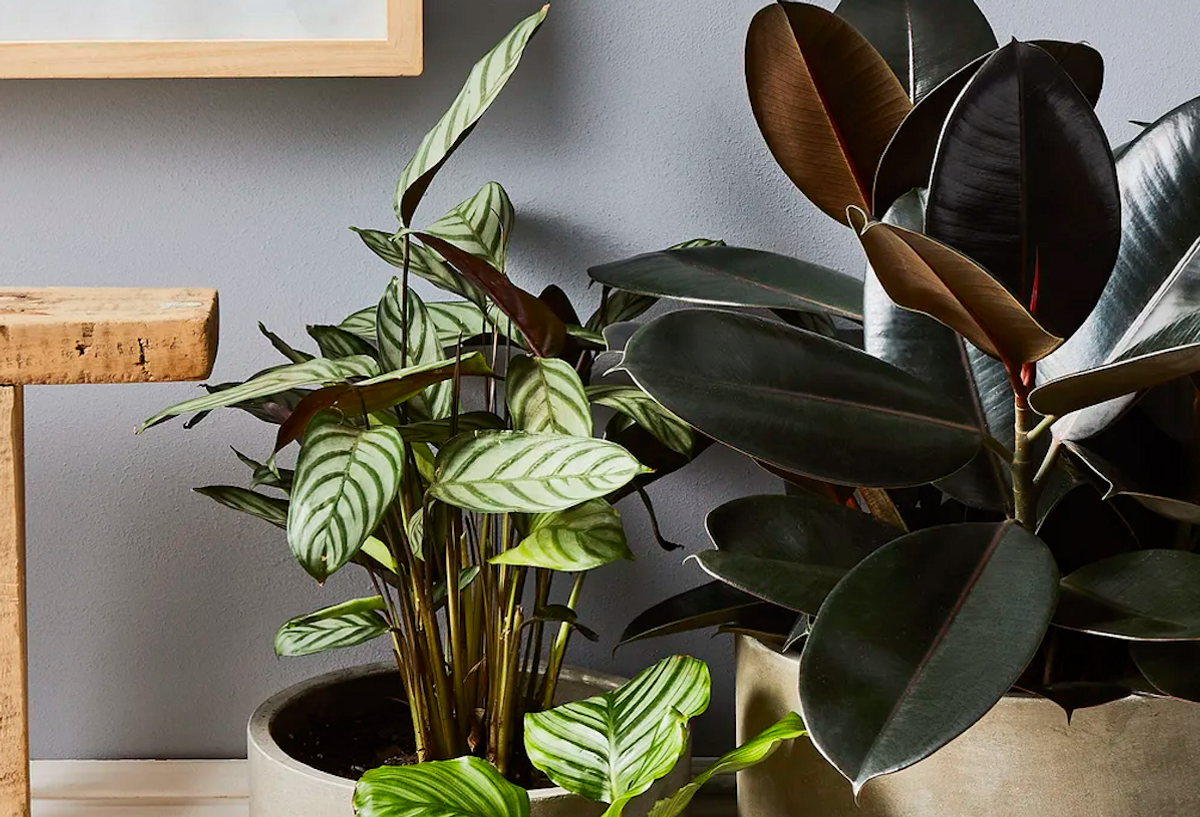The common mistake that might be killing your indoor plants

For the second time in a year, I went abroad on holiday, and my husband killed a plant. The worst part? He killed it with love — too much love, that is. He overwatered it.
What hurt the most was that it was a snake plant, aka, the most indestructible indoor plant known to us. Turns out, one thing can destroy it, and it’s not what you think — not too much sunlight nor too little airflow or temperature fluctuations (although all of those can affect its well-being to some extent). It’s giving it too much attention, when all it wants is to be left alone. Too much watering, and not even drainage, did my Sansevieria in.
This wasn’t the first time overwatering had taken a toll on my indoor plants. My ZZ plant, another one of those houseplants that thrive on semi-neglect, has started to get very droopy over the past few months. When I polled friends on Instagram to check in on its near-collapse, the most common response? “You’re overwatering it.”
I could’ve sworn I was doing the opposite all along and underwatering it. Were its yellowing leaves and lackluster growth not signs of that? My husband and I (ah, the painful realization that I’m not inculpable) had clearly been misreading it all. So I turned to an expert, Lindsay Pangborn, a member of Bloomscape‘s Grow-How team, to learn how to better understand the needs of my plants. And why overwatering seems to kill more of them than . . . underwatering. Her best advice? Skip watering on a schedule, and instead evaluate your plant and its soil to know when to water. Read on for more.
Is overwatering often more of a problem than underwatering?
Lindsay Pangborn: Yes, I have to agree! Overwatering is one of the top common causes of plant death for houseplants. There’s a reason why drainage holes on the bottom of pots is our top piece of advice for plant parents, especially for those who are new to the lifestyle. Mastering the art of watering can be tough, since it’s so dependent on the individual environment: Factors like light level, humidity, temperature, airflow, and more can all affect how quickly (or slowly) your plant uses water.
So, why does overwatering kill plants?
LB: When plants are overwatered, their soil can become saturated and their roots are denied oxygen. Over time, the roots simply cannot function, which is why some signs of overwatering are so similar to signs of underwatering (aha!). This issue first shows itself by plants with droopy leaves that don’t perk up after watering. Leaves often start to turn yellow and fall off the plant in more advanced stages of overwatering.
Which popular plants are especially prone to overwatering?
LB: – The Parlor Palm is one of the most popular plants prone to overwatering. It requires such little water that it can instead thrive off regular mistings a few times a week to boost growth and prevent insect infestations.
– The Money Tree is another plant that tends to receive more water than necessary since its growth is dependent on the seasonal changes. This plant prefers deep, but infrequent, watering periods, especially during the colder months, when its natural growth will typically slow.
– Succulents and Sansevierias are prone to overwatering as well, due to their tendency to thrive in dry conditions and their ability to store water in their leaves and stems. They do tend to need more watering during summer months when they are actively growing, versus winter months, when they are often dormant.
Are there some plants that don’t mind being overwatered?
LB: There are many plants that can grow in water and are able to adapt to periods of flooding. In the houseplant world, a common type of plant that is tolerant of lots of water is the carnivorous variety. Many carnivorous species are native to a bog environment, which means they enjoy growing in consistently damp moss in lots of direct sunlight. The Pitcher Plant is a great example, and looks great in a pot or hanging basket near a south- or west-facing window.
How can we ensure we are not overwatering our plants?
LB: One way to ensure you’re not overwatering your plant is by making sure your plant’s pot has a drainage hole at the bottom to allow excess water to drain out. Often, these pots have a matching saucer to catch excess water and protect your furniture. A plant in a pot without drainage holes has increased chances of root rot and overall damage/death from overwatering.
A plant will “tell” you when it needs water. Every plant and its setting is different due to variations in temperature, humidity, and light exposure. The same type of plant in a different location may need watering at a completely different frequency. For example, Sansevierias in direct sun and warm temperatures can be watered weekly, while Sansevierias in a low light and/or chilly area only need water once every 4 to 6 weeks. For this reason, we never recommend watering on a schedule, and instead recommend evaluating your plant and its soil to know when to water. One tip I recommend for small pots is to conduct the touch test:
- Push your finger into the soil until its level is at your middle knuckle.
- If the soil is moist, do not water it, and check on it again in a few days.
- If the soil feels dry, water your plants until the water flows freely out of the pot’s drainage holes. Remove the excess water and place the pot back onto an empty saucer.

